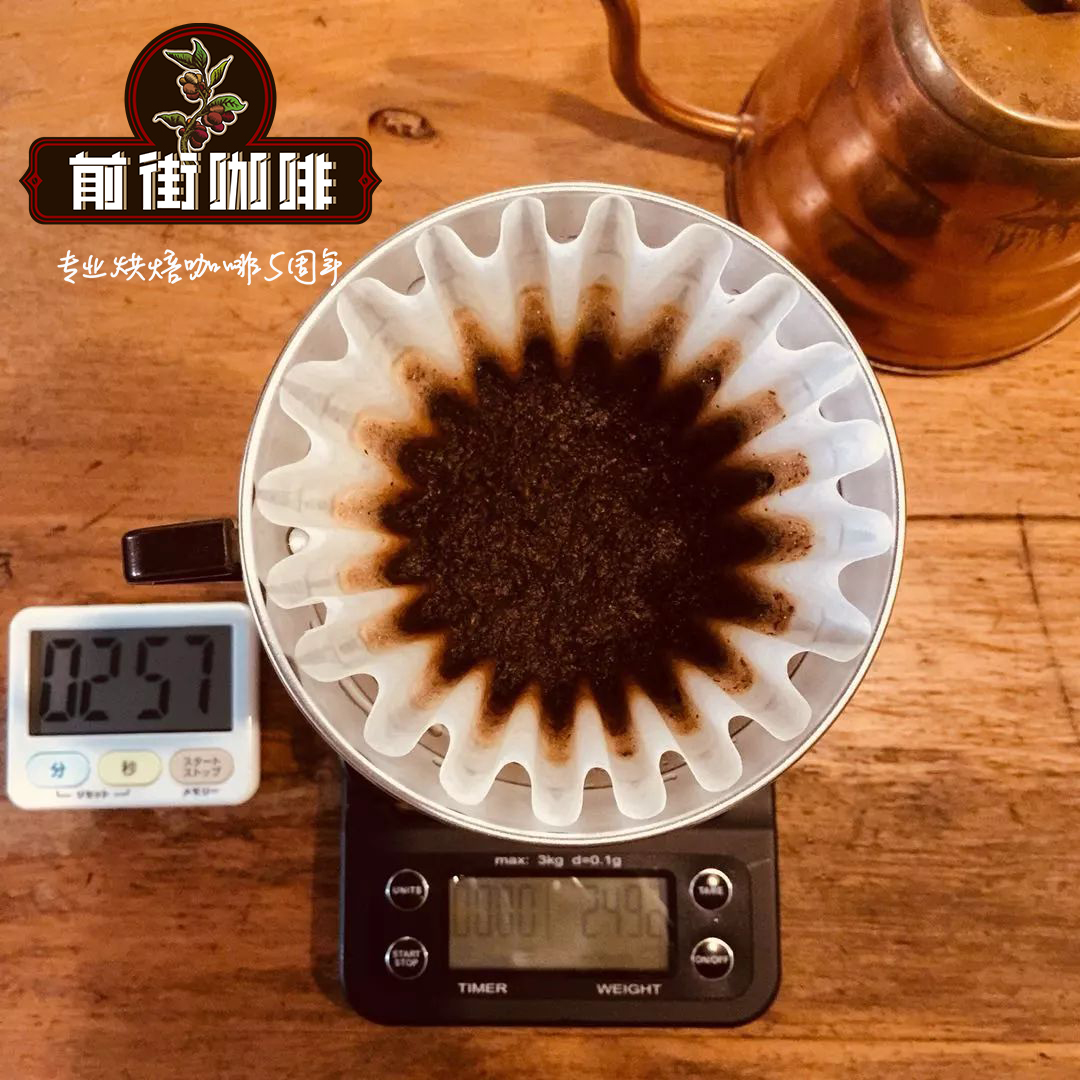Introduction to three categories of coffee beans does the action of chlorogenic acid affect the flavor of coffee?

Professional coffee knowledge exchange more coffee bean information please follow the coffee workshop (Wechat official account cafe_style)
Qianjie-A brief introduction to the three varieties of coffee beans and chlorogenic acid
1. Arabica species
The origin of the Arabica species is the Abyssinia Plateau of Ethiopia (now the Ethiopian Plateau). In the early days, it was mainly eaten as medicine, developed the habit of baking and drinking in the 13th century, was introduced into Europe through the Arab region in the 16th century, and became a favorite drink all over the world. Arabica coffee accounts for 75%-80% of all coffee, and its excellent flavor and aroma make it the only coffee that can be drunk directly among these native species. But its resistance to dryness, frost, diseases and insect pests is too low, especially the natural enemy of coffee-leaf rust.
Arabica coffee beans are mainly grown in South America (except parts of Argentina and Brazil), Central America, Africa (Kenya, Ethiopia and other places, mainly East African countries), Asia (including parts of Yemen, India and Papua New Guinea).
two。 Robusta species
The leaf rust-resistant varieties found in Congo in Africa have stronger disease resistance than Arabica. The hot and humid zone that is not suitable for Arabica coffee is where Robusta grows coffee. Robusta has a unique aroma and bitterness, accounting for only 2% or 3% of the mixed coffee, and the whole cup of coffee is robusta flavor. Its flavor is so bright and strong that if you want to taste it directly, you have to consider it. It is generally used in instant coffee, bottled coffee, liquid coffee and other industrial production of coffee. The content of caffeine is about 3.2%, much higher than 1.5% of Arabica species.
The main producing countries are Indonesia, Vietnam and West African countries with C ô te d'Ivoire, Algeria and Angola as the center. Vietnam has been more committed to becoming a major coffee producer in recent years.
3. Liberian species
West Africa, the origin of coffee grown in Liberia, has a strong adaptability to all kinds of environments, such as high or low temperature, humidity or dryness, except that it is not resistant to leaf rust and its flavor is worse than that of Arabica, so it is only traded or planted in some West African countries (Libya, C ô te d'Ivoire, etc.).
According to the statistics of ICO (International Coffee Organization), excluding the domestic transactions of coffee-producing countries, about 65% of the coffee in circulation in the world market is Arabica and 35% is robusta. Arabica species are characterized by slender and flat grains, while robusta coffee beans are more round and can be easily distinguished by their shape.
Chlorogenic acid is formed by dehydration and condensation of quinic acid and caffeic acid by esterification. This is a reversible reaction. In other words, chlorogenic acid can be hydrolyzed into quinic acid and caffeic acid when it comes to water. Because hydrolysis is an endothermic reaction, coffee will decompose after being heated during roasting.
Chlorogenic acid can be fully decomposed into caffeic acid and quinic acid, which is the "water decomposition" reaction mentioned by Mr. Taguchi in the collection of boutique coffee. There will be sour (quinic acid) and astringent (caffeic acid) in flavor.
?? In the case of insufficient water (the water content of beans is low, or the dehydration process before explosion is too fast), when the water in raw beans is insufficient (free water is used up in advance), chlorogenic acid cannot be fully decomposed into caffeic acid and quinic acid. At this time, chlorogenic acid will take the "dehydration reaction" to dehydrate the quinic acid in the chlorogenic acid molecule to form chlorogenic acid lactone, which is a good bitter taste (sweet in bitterness) according to Taguchi. There will be a hierarchical sense of bitterness in the taste. ?? The above description is mainly based on the chemical reaction and structure to analyze the situation of chlorogenic acid. Different methods will lead to different results in the decomposition of chlorogenic acid.
Knowledge expansion: caffeine accounts for 0.9% Mel 1.4% in Arabica: Carneflari usually accounts for 2%, more than 3% in more cases
In short: Qianjie is a coffee research hall, happy to share the knowledge about coffee with you, we share unreservedly just to make more friends fall in love with coffee, and there will be three low-discount coffee activities every month. The reason is that Qianjie wants to make more friends drink the best coffee at the lowest price, which has been Qianjie's tenet for 6 years!
END
Important Notice :
前街咖啡 FrontStreet Coffee has moved to new addredd:
FrontStreet Coffee Address: 315,Donghua East Road,GuangZhou
Tel:020 38364473
- Prev

A brief introduction to the types and producing areas of Coffee beans the main components and functions of Coffee
Professional coffee knowledge exchange more coffee bean information please follow the coffee workshop (Wechat official account cafe_style) front street-Arabica coffee beans, ingredients introduction Coffee tree is the Rubiaceae coffee genus flowering plants, there are about 120 species, ranging from small shrubs to 18 meters tall trees. Wild coffee species grow irregularly in the tropics, and people continue to send them.
- Next

A brief Analysis of the Origin and Flavor characteristics of Robosta Coffee Bean
Professional coffee knowledge exchange more coffee bean information please follow the coffee workshop (Wechat official account cafe_style) front street-Robusta varieties, chlorogenic acid composition introduction Robusta originally only Arabica coffee, but at the end of the 19th century, a major pest occurred, coffee growers began to explore pest-resistant coffee varieties, resulting in Robusta
Related
- Beginners will see the "Coffee pull flower" guide!
- What is the difference between ice blog purified milk and ordinary milk coffee?
- Why is the Philippines the largest producer of crops in Liberia?
- For coffee extraction, should the fine powder be retained?
- How does extracted espresso fill pressed powder? How much strength does it take to press the powder?
- How to make jasmine cold extract coffee? Is the jasmine + latte good?
- Will this little toy really make the coffee taste better? How does Lily Drip affect coffee extraction?
- Will the action of slapping the filter cup also affect coffee extraction?
- What's the difference between powder-to-water ratio and powder-to-liquid ratio?
- What is the Ethiopian local species? What does it have to do with Heirloom native species?

